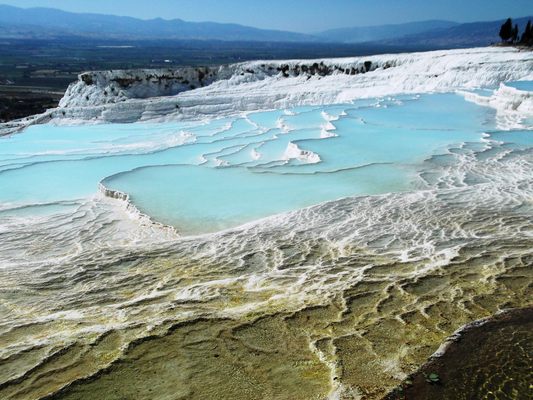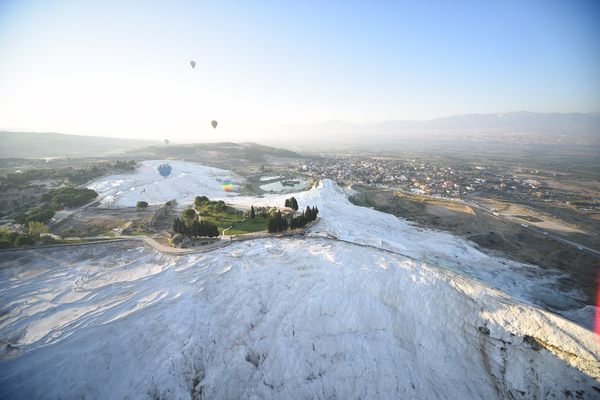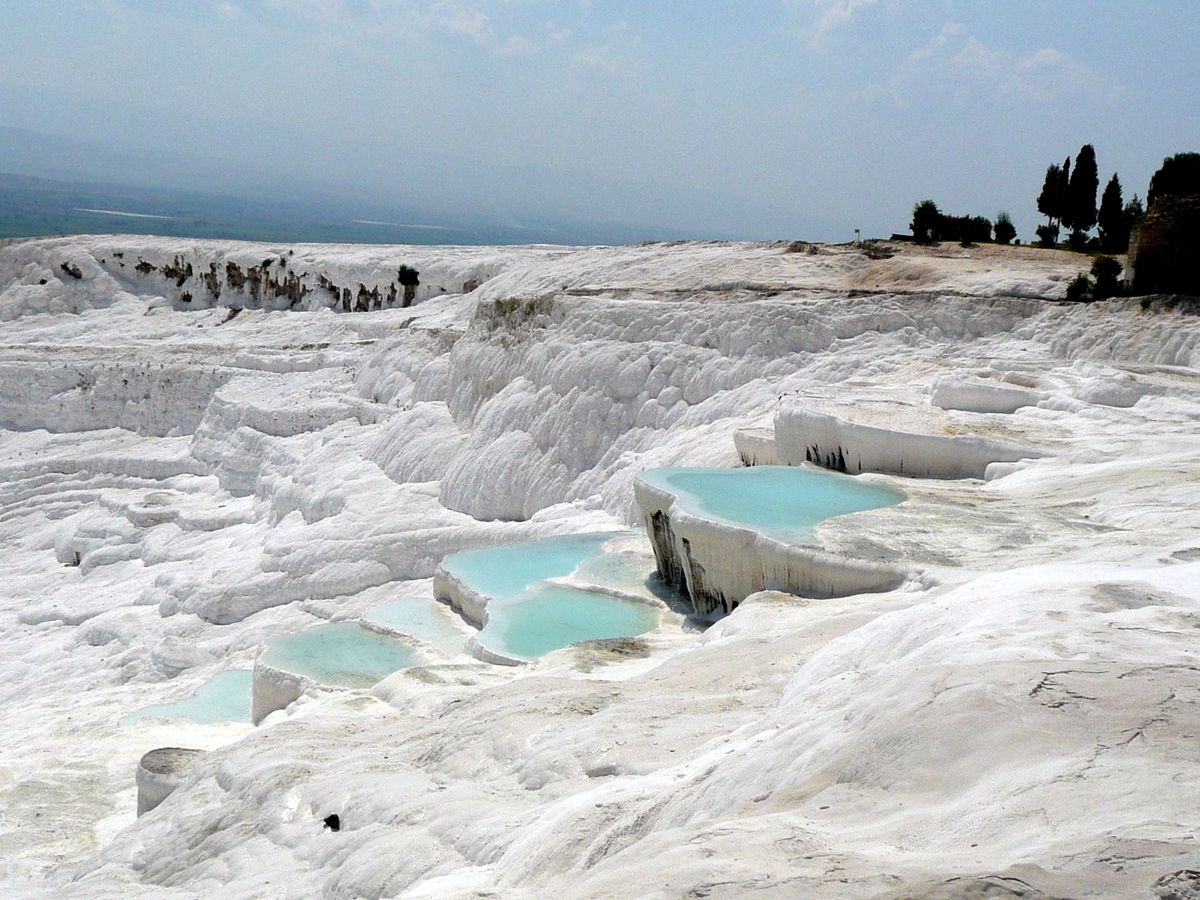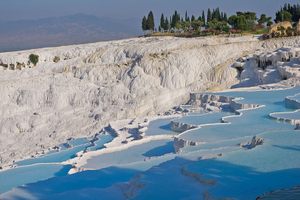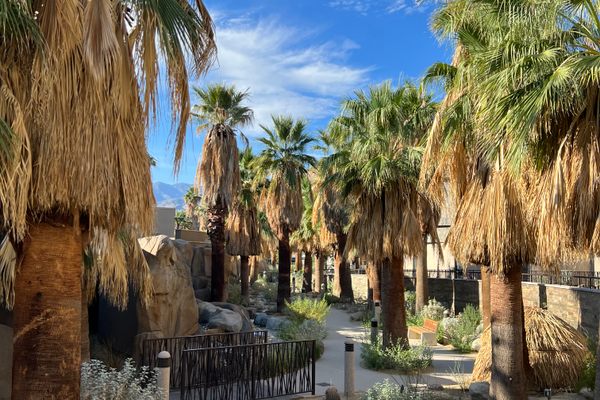About
Once a kind of Roman-era health spa, the spectacular rock formations below the ancient city of Hierapolis form a blindingly white natural cascading fountain. Waters from ancient hot springs spilling down the hillside for a millennia have formed terraces of oyster-shell shaped pools, the white travertine constantly refreshed by the flow of the calcium rich waters.
Named the "Cotton Castle" in Turkish, the site has been celebrated as a natural wonder since the second century BC when the city of Hierapolis was formed around the healing waters. A thriving metropolis during the Roman era, the city survived and rebuilt several times following earthquakes, and it was not completely abandoned until 1300 AD. The ruins are extensive, including a Nymphaeum fountain which distributed water throughout the city, a large amphitheater, as well as the remains of the largest ancient necropolis in Turkey.
Together with the ruins of Hierapolis, Pamukkale is now a protected UNESCO World Heritage Site. Before the designation, the terraces were in danger of being destroyed through a combination of neglect and commercial development. Hotels were built at the top of the site, partly obscuring ruins of Hierapolis , and wear and tear from the feet and shoes of visitors had scarred and turned many of the pools brown. Efforts to protect the delicate natural phenomenon have dramatically changed the area. Hotels have been demolished, and in an effort to allow the pools natural white appearance to be maintained, access to the pools is tightly restricted, and water released from the spring is controlled and only distributed to a few pools at a time. Artificial pools for bathing tourists have been added.
Although natural phenomenon like this is exceedingly rare, a similar but smaller set of travertine pools exist in Huanglong, China. Sadly, another site beloved by Victorian settlers in New Zealand was destroyed by a volcanic eruption in 1886.
Visitors should bring a backpack to comfortably carry their shoes, as you can explore the main drift of the mountain, but only barefoot.
It’s essential to be environmentally conscious. Littering should be avoided, and visitors must refrain from walking on the terraces with shoes or touching the travertine formations.
Related Tags
Know Before You Go
The nearest town is Denizli, approximately 20km away. Local buses ("dolmush") and taxi's are available in Denizli to Pamukkale.
Community Contributors
Added By
Published
November 23, 2010





